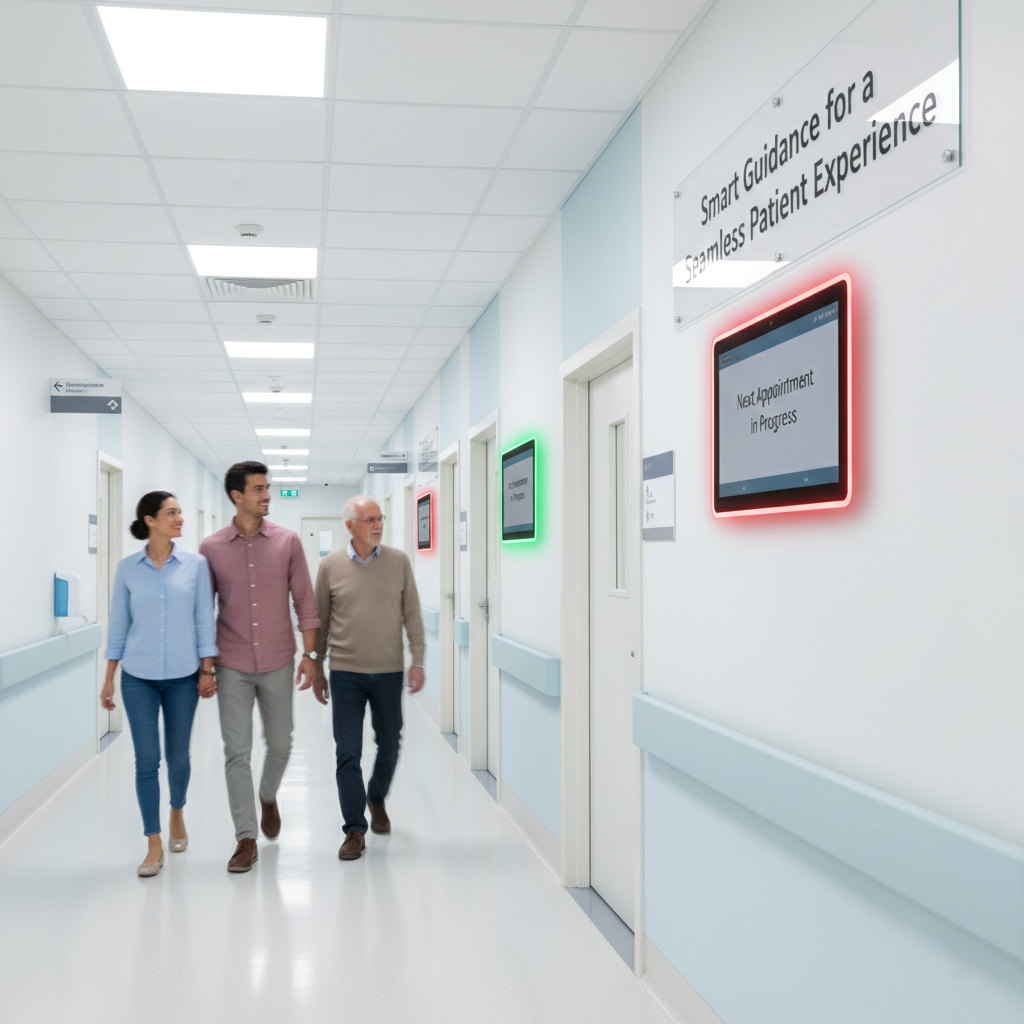How a Smart Diagnosis Room Display Transformed Hospital Scheduling Efficiency
![]() 2025-11-17
2025-11-17
![]() Hopestar
Hopestar
In modern hospitals, efficiency is not just an operational goal—it is directly tied to patient satisfaction, staff productivity, and overall service quality. As outpatient volumes continue to rise, traditional manual scheduling processes often become a source of delays and miscommunication. Doctors rotate frequently, appointments shift unexpectedly, and the lack of real-time room visibility creates unnecessary bottlenecks. For many institutions, this gap between patient flow and room coordination has turned into a significant operational challenge.
When Manual Scheduling Becomes a Barrier
A major urban hospital in Southeast Asia was facing this exact problem. With more than 40 consultation rooms operating daily, the facility depended on printed timetables and handwritten notes to manage doctor availability. Any shift change required nurses to physically update paper signs posted outside each room. When delays occurred, the information rarely reached patients quickly enough. This led to situations where patients queued outside rooms that were temporarily unavailable, while other rooms sat idle.
The administrative team recognized that the core issue was not the staff—it was the absence of a centralized, real-time communication mechanism to keep room status, doctor schedules, and patient queues aligned.

The Hidden Inefficiency Behind Manual Updates
Before digitalization, room status visibility was the job of a single coordinating nurse. Over the course of a day, this meant dozens of trips down crowded hallways to adjust paper signs. The system consumed valuable time and opened the door to mistakes. A delayed update might leave a room underutilized, while another room experienced long queues.
The hospital later calculated that this outdated workflow resulted in more than 20 minutes of lost time per doctor each shift—adding up to several hours of missed productivity daily. More importantly, patients experienced confusion and extended waiting times, contributing to frustration and complaints.

Embracing a Digital Room Display Solution
The hospital ultimately decided to replace its manual system with a real-time digital alternative. Instead of relying on printed charts, each consultation room was equipped with a black smart diagnosis room display capable of synchronizing instantly with the hospital’s central scheduling system.
These displays—purpose-built for commercial environments—functioned as black medical room display tablets, providing clear, dynamic updates on doctor availability, room occupancy, and ongoing session status. Compared to consumer devices, they offered reliable 24/7 performance, stable network connectivity, and front panels suitable for high-touch medical spaces.
Mounted directly outside each room, every unit operated as a black digital door sign, giving both patients and medical staff real-time clarity about which doctor was in session and which room was available.

Seamless Integration with the HIS System
To ensure accurate real-time updates, the hospital’s IT department collaborated with software engineers to integrate the display solution with their existing HIS (Hospital Information System). Through an API connection, each device could pull and refresh:
doctor names
specialty information
appointment schedules
patient queue numbers
room availability status
The system interface supported multiple languages and incorporated intuitive visual indicators—green for available, red for occupied. This meant staff no longer needed to rely on phone calls or walkie-talkies to communicate room changes. Patients arriving for appointments could immediately find the correct door thanks to the black clinic scheduling tablet placed outside each consultation room.

A Noticeable Shift in Daily Hospital Operations
Within one month, the hospital had installed over 60 units of black digital signage tablets throughout the outpatient department. The impact was felt immediately:
Front-desk staff could view room activity across all departments from a central dashboard.
Doctors appreciated the automatic schedule synchronization, which reflected their breaks, rotations, and session times accurately.
Patients no longer gathered outside incorrect rooms; they simply checked the black patient flow management display to confirm the correct location.
The displays also showed customizable notifications such as “Session Starting Soon” or “Doctor on Break,” helping set clear expectations and improving patient experience.

Measurable Improvements That Matter
Three months after implementation, the hospital reported significant improvements:
27% increase in room utilization efficiency
40% reduction in patient misdirection incidents
Noticeably smoother appointment transitions
Reduced administrative workload for nurses
Improved patient satisfaction scores in outpatient departments
Patients highlighted how easy it had become to navigate the clinic with real-time visual guidance. Staff noted that daily schedules, previously prone to cascading delays, now remained on track.
As one administrator summarized:
“Information now flows automatically across departments. Everyone—from patients to doctors—stays synchronized without effort.”
A Blueprint for Modern Healthcare Coordination
The success of this deployment encouraged several hospitals within the same network to explore similar upgrades. For management teams, it demonstrated that digital room displays are not just a technological upgrade—they are a foundational tool for operational excellence.
By combining enterprise-grade black Android tablet hardware with seamless real-time data synchronization and medical-oriented interface design, healthcare institutions can achieve:
Higher room turnover
Clearer patient navigation
Reduced staff workload
More accurate schedule transparency
As healthcare environments evolve, smart digital room signage and black commercial display tablets are becoming essential components of modern hospital infrastructure. This case stands as a clear example of how thoughtful technology implementation can transform patient flow from uncertainty to efficiency.

 86 13392660243
86 13392660243 hope17@cnhopestar.com
hope17@cnhopestar.com
 whatsapp
whatsapp
 Smart Efficiency on the Factory Floor: How Industrial Tablets Transformed Manufacturing and Logistics Operations
Smart Efficiency on the Factory Floor: How Industrial Tablets Transformed Manufacturing and Logistics Operations 












